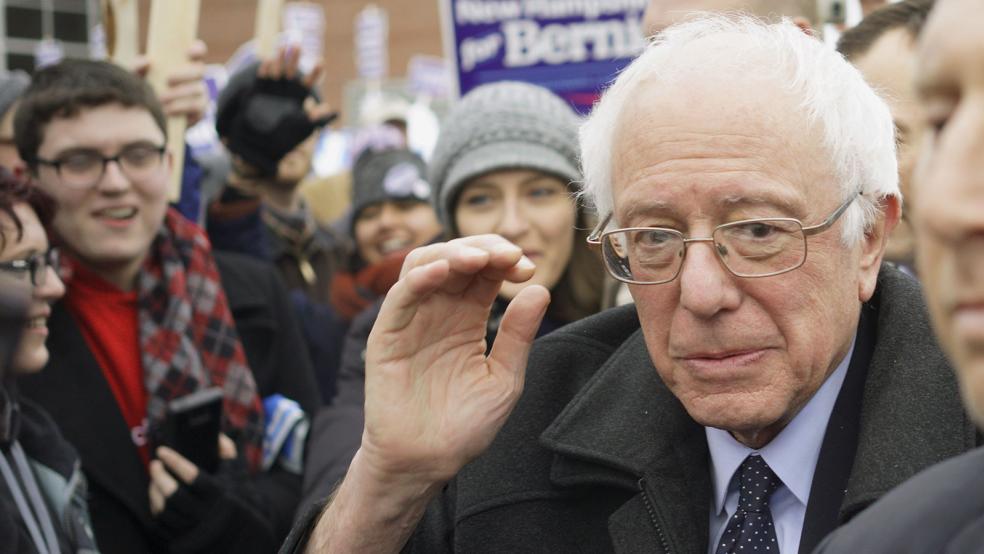One of Bernie Sanders’ most popular campaign themes has been the promise of free tuition at public colleges and universities. With student debt surpassing $1.3 trillion, the idea is timely. Further, as Sanders and his supporters point out, free tuition has precedents both here and abroad. Finally, the fact that the cost would be covered by a tax on financial transactions is not much of a deterrent, as most voters would not expect to pay this levy. But depending on how Sanders proposal is implemented, it could result in substantial waste and produce serious unintended consequences.
The Sanders plan, as described on his website, would eliminate tuition for all students at public institutions of higher education regardless of income, and would cover expenses such as books and dormitory accommodations for economically disadvantaged students.
Related: Clinton’s $350 Billion College Tuition Plan Built on Rosy Assumptions
Since many students now attending public colleges and universities come from upper middle class and affluent families, a significant portion of the money will benefit families that don’t need a subsidy. According to federal statistics, 26.6 percent of dependent students in four-year public colleges had family income of $100,000 or more.
Further subsidies for textbooks could result in a further escalation of their costs. During a recent visit to the UC Berkeley bookstore, I found an introductory economics textbook selling for $300. The Public Interest Research Group reports that textbook prices increased 73 percent over the last decade — quadruple the rate of inflation — with some books selling for $400 or more. In an age of Amazon, eBooks and Wikipedia, it is surprising to see relatively unspecialized knowledge being sold at such high price points.
As students using the $300 economics textbook might learn, much of the cost takes the form of “economic rents” — or excess profits — going to the professors who write the books and publishers who print them. These rents arise from the fact that students are a captive audience; they usually need to purchase required textbooks to do well in the course. In certain cases, professors assign their own textbooks — a conflict of interest that allows academics to directly grab student and taxpayer money.
Related: Hillary’s College Plan—Debt Free College Now, Tax Them When They Make Money
Sanders and his supporters refer to the fact that the City University of New York offered free tuition until the 1970s. But as CUNY discusses on its website, free tuition was only available to certain students based on merit. In 1970, the university extended free tuition to all students and adopted open enrollment — a policy under which any high-school graduate would be admitted. The policy change triggered a rapid escalation in costs. The expenditures of the city’s Board of Higher Education rose from $298 million in fiscal 1971 to $533 million in fiscal 1975. Runaway college spending was one of a number of factors that contributed to New York City’s fiscal crisis — which resulted in the loss of local budget authority and the elimination of free CUNY tuition in 1976.
Sanders’ site does not explicitly say whether free tuition would be merit-based; my reading is that it won’t be. If a student can gain admission to a state university or community college, he or she can expect to be eligible for the program. Many of these institutions have minimal admissions standards. For example, California community colleges are required to admit any student with a high-school diploma or equivalent. A number of four-year state colleges around the country have admission rates of 100 percent.
Colleges with lax admission requirements often have low graduation rates. For example, California community colleges have an overall graduation rate of 26.2 percent. Daytona State College, a four-year Florida public institution that admits 100 percent of applicants, has a graduation rate of just 38.1 percent.
Related: Sanders’ Plan Would Raise Taxes a Staggering $13.6 Trillion over a Decade
Freed of the need to pay tuition now or later (through student loan repayments), many additional marginal students will seek admission to public colleges. At least some of these institutions will expand to accommodate the additional enrollees. The graduation rates of these new students will probably be lower than the sub-50 percent levels now achieved by most community colleges and many four-year schools. Although students who fail to graduate may learn something and have enjoyable experiences during their time at colleges, their departures suggest that the career and educational benefits of their studies were limited, and thus the money spent on their attendance was at least partially wasted. Further, students’ participation in an unsuccessful course of study has an opportunity cost both for them and the larger society: They could have been gaining experience and providing service by being in the workforce.
Sanders proposes to pay for the program with a 0.5 percent tax on stock transactions and a 0.1 percent tax on bond transactions. This financial transactions tax (FTT) is intended to fall mainly on financial industry interests that trade frequently. But the tax would also have a heavy impact on mutual funds often held by middle-income investors saving for retirement. Actively managed mutual funds buy and sell stocks frequently, and the taxes incurred on these transactions will be passed through to fund investors. Transaction costs also affect index funds, which must buy and sell stocks as investors add and redeem their funds and as companies are included in and removed from target indices. The Sanders transaction tax would increase the costs of investing in all mutual funds, reducing their returns and retarding families’ ability to save for retirement.
Related: Forget Bernie Sanders: Here’s How You Can Go to a Top College for Free
Free tuition, subsidized expenses and lax admission standards should attract many new students to public colleges — ballooning the cost of the Sanders initiative. Some of the new spending will subsidize rich kids who don’t need the money or will be wasted on students unprepared for higher education and thus likely to drop out. Funds that middle-class investors need for a secure retirement will be diverted to the already profitable college textbook business. In its current, skeletal version, the Sanders college affordability plan seems to have numerous drawbacks. Perhaps the candidate can assuage these concerns by fleshing out his proposal.






